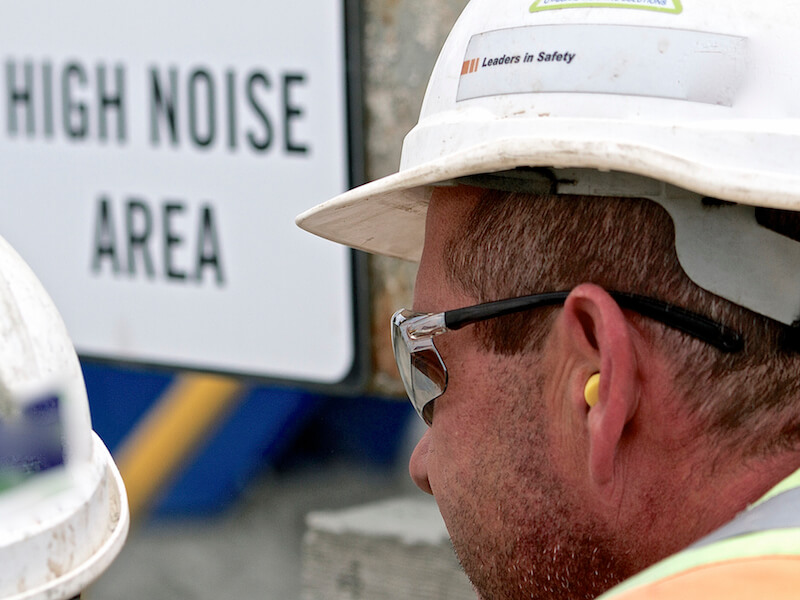
A noisy workplace isn’t very good for your ears (or your concentration, for that matter). Even modest noise, when experienced for eight hours a day, can begin to weaken the health of your hearing. That’s why it’s pretty smart to start asking questions like, “what level of hearing protection should I use”?
It isn’t common knowledge that numerous levels of hearing protection are available. But it seems logical when you stop to consider it. A jet engine mechanic will need a different level of protection than a truck driver.
Levels of Hearing Damage
The basic rule of thumb is that 85 decibels (dB) of sound can begin harming your ears. Putting sound into context with regards to its decibel level and how dangerous it is, isn’t something most of us are used to doing.
Eighty-five decibels is about how loud city traffic is when you’re sitting inside your car. No biggie, right? Actually, it’s rather significant. It becomes a big deal after numerous hours. Because it’s not just the loudness of the noise that you need to pay attention to, it’s the duration of exposure.
Common Danger Zones
If you’re exposed to 85 dB of noise for eight hours a day or more, you need to consider wearing ear protection. But that isn’t the only threshold you need to be aware of. If you’re exposed to:
- 90 dB (e.g., lawnmower): Damage will start to occur to your ears if you’re exposed to this volume of noise for 4 hours a day.
- 100 dB (e.g., power tools): Anything over one hour will be damaging to your ears.
- 110 dB (e.g., leaf blower): Anything above fifteen minutes is considered harmful to your hearing.
- 120 dB (e.g., rock concert): If you are exposed to this level of noise for any amount of time, your hearing can be damaged.
- 140 dB (e.g., jet engine): This amount of noise will lead to immediate damage and most likely pain to your ears.
You’ll want the hearing protection you wear to be sufficient to bring the decibel level below that 85 dB level, especially if you’re exposed to those sounds for any amount of time.
Make Sure Your Hearing Protection Fits Comfortably
The effectiveness of hearing protection is measured by something called a Noise Reduction Rate, or NRR. The higher the NRR, the quieter your world will be (temporarily).
Most workplaces will have recommendations as to what degree of protection will keep your hearing safe because it’s essential to have the correct protection.
Comfort is also an important component to think about. It’s really essential that your hearing protection is comfortable to wear if you want to keep your hearing safe. This is because you’re not as likely to actually wear your hearing protection if it’s uncomfortable.
What Are my Hearing Protection Choices?
There Are Basically Three Options:
- Earplugs that go within the ear canal
- Earplugs that sit just outside of the ear canal.
- Earmuffs.
There are advantages and disadvantages to each type of protection, but the majority of your hearing protection decision will depend upon personal preference. Earmuffs are the best option for people whose ears are irritated by earplugs. Other people may appreciate the leave-them-in-and-forget-them strategy of earplugs (obviously, you won’t want to forget them for too long… you should take them out at the end of your workday. And clean them).
Find a Consistent Degree of Hearing Protection
Comfort is significant because any lapse in your hearing protection can lead to damage. If earmuffs are scratchy and uncomfortable you’re more likely to take them off for short periods and that can have a negative impact on your hearing over time. This is why hearing protection that you can leave in for the entire workday is the best solution.
Investing in the level of hearing protection you need can help keep your ears happy and healthy.
Call Today to Set Up an Appointment
References
https://www.cdc.gov/nceh/hearing_loss/what_noises_cause_hearing_loss.html
